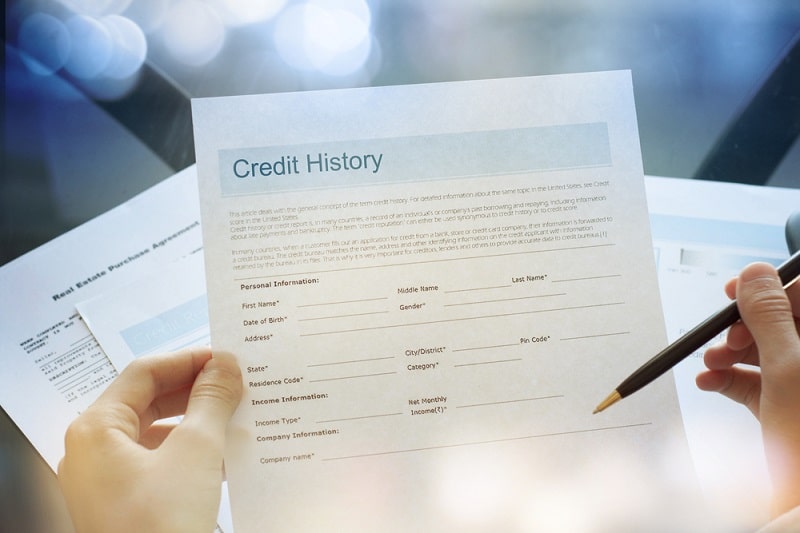How to Remove Collection Accounts from Your Credit Report
Collection accounts can seriously damage your credit score. Once a debt goes into collections, it signals to lenders that you’ve missed payments long enough for the creditor to stop trying to collect from you directly.

This can make it harder to qualify for loans, credit cards, or even rental housing. And if you do get approved, you’re likely to face higher interest rates and stricter terms.
You’re not stuck with collections forever. Depending on your situation, you may be able to get them removed—especially if they’re inaccurate, outdated, or already paid. This guide walks you through your best options, including how to dispute errors, request removal with a goodwill letter, or negotiate a pay-for-delete agreement.
What to Know Before You Try to Remove a Collection
Removing a collection account isn’t always straightforward. Before you act, it helps to understand how collections work and how they affect your credit score.
What Counts as a Collection Account
A collection account appears when a creditor turns over an unpaid debt to a debt collector. This can happen with credit cards, medical bills, utility accounts, or loans.
Sometimes the original creditor still owns the debt and simply hires a collector to recover it. Other times, the debt is sold to a third-party debt buyer. Either way, once it’s reported, the collection shows up on your credit report.
How Collections Impact Your Credit Score
Collection accounts are considered serious negative items. They can lower your credit score by dozens or even hundreds of points, depending on the rest of your credit history.
FICO scores ignore paid collections under $100 and treat all other collections—paid or unpaid—pretty harshly. VantageScore is more forgiving and no longer factors in paid collection accounts at all.
Either way, unpaid collections are worse than paid ones. But even paid collections can scare off lenders unless they’re removed from your credit report entirely.
Can Legitimate Collections Be Removed?
Yes, sometimes. Even if the collection is valid, you still have a few tools at your disposal. You can request deletion through a goodwill letter, negotiate a pay-for-delete agreement, or wait for it to age off after seven years. If there’s an error, you can dispute it and have it removed entirely.
1. Dispute Inaccurate Collection Accounts
If the collection is inaccurate in any way, this should be your first step.
When to Use This Method
Disputing works best when:
- The collection isn’t yours
- The amount is wrong
- The account was already paid
- The collection is too old to remain on your credit report
How to Dispute a Collection
Start by gathering any documentation you have that proves the collection is incorrect. Then, file a dispute directly with the credit bureau that’s reporting the error.
You can say something like:
“This collection account does not belong to me and appears to be reported in error. Please investigate and remove it from my credit report.”
Once the credit bureau receives your dispute, they have 30 days to investigate and respond. If they can’t verify the information, the collection must be deleted.
Where to File Disputes
You can dispute a collection account online or by mail, but mailing your dispute gives you a paper trail and often leads to more thorough investigations. If you choose to mail your dispute, send it by certified mail with return receipt requested. Here’s where to send your credit dispute letter:
- Equifax
P.O. Box 740256
Atlanta, GA 30374-0256
Dispute online - Experian
P.O. Box 4500
Allen, TX 75013
Dispute online - TransUnion
P.O. Box 2000
Chester, PA 19016
Dispute online
Be sure to include a copy of your credit report with the disputed item clearly marked, a written explanation of the issue, and any supporting documentation.
2. Send A Goodwill Letter
This is a request—not a demand—for the creditor or collector to remove a paid collection out of courtesy.
What Is a Goodwill Letter?
A goodwill letter asks the company that reported the collection to delete it as a favor, usually because you’ve already paid the debt and have a good track record otherwise.
They’re not required to say yes, but many people have had success—especially with smaller or local creditors.
When This Works Best
Goodwill letters work best when:
- The collection is already paid
- You’ve had a strong payment history before or after the account
- The negative mark was tied to a hardship, such as job loss or medical issues
Goodwill Letter Template + Key Tips
Keep your message short, polite, and honest. Include:
- Your name and account number
- A brief explanation of the situation
- A request to remove the collection as a goodwill gesture
Here’s a simple template:
“To Whom It May Concern,
I’m writing to ask for a goodwill deletion of a paid collection account (Account #123456). I fell behind due to a temporary hardship but have since paid the debt in full. I’ve worked hard to keep my credit on track and would greatly appreciate your consideration in removing this from my credit report. Thank you for your time.”
Send your letter by mail or email directly to the creditor or collection agency.
3. Negotiate a Pay-For-Delete Agreement
If the collection is still unpaid, you might be able to strike a deal before you pay.
What Is a Pay-For-Delete?
A pay-for-delete agreement is when a debt collector agrees to remove a collection from your credit report if you pay some or all of the debt.
It’s not officially endorsed by credit bureaus, and it’s technically against their reporting guidelines. Still, many collectors will do it because it helps them recover payment.
Will Credit Bureaus Allow It?
No. The credit bureaus discourage this practice and state that all collections should remain, whether paid or not. But some collection agencies will still agree to it behind the scenes.
That’s why it’s important to get any agreement in writing before you send payment.
How to Negotiate and Document It
Call the collector and ask if they’re willing to delete the collection in exchange for payment. If they say yes, ask them to send you the terms in writing.
Here’s a sample pay-for-delete template you can use.
Once you have proof, make the payment as agreed. Keep records of everything in case you need to follow up.
4. Wait It Out (If Nothing Else Works)
If none of the removal methods work, the collection won’t stay on your credit report forever.
How Long Do Collections Stay on Your Credit Report?
Collection accounts are removed after seven years from the original delinquency date—the date you first missed a payment and never brought the account current again. Not the date it was sent to collections, and not the date it was paid.
Once that seven-year mark passes, the collection should automatically drop off your credit report. If it doesn’t, you can request a removal based on the reporting time limit.
Can Paying a Collection Help?
Paying a collection won’t erase it from your credit report, but it can still help your credit in other ways.
- FICO 9 and FICO 10 ignore paid collections when calculating your credit score.
- VantageScore 3.0 and 4.0 also exclude paid collections.
- Lenders often view paid collections more favorably than unpaid ones.
Even if the account stays on your report, paying it off could improve your approval odds with future lenders or landlords.
Hire a Credit Repair Company (Optional)
Not everyone has the time or patience to manage credit disputes. If you're overwhelmed or dealing with multiple errors, a credit repair company might help.
When to Consider Professional Help
- You have several collections or other negative items to dispute
- Your disputes were rejected, and you’re not sure what to do next
- You don’t have time to handle back-and-forth communications with creditors and credit bureaus
What to Look For
A legitimate credit repair company should be upfront about costs, offer month-to-month service, and provide clear expectations. Look for:
- Transparent pricing and no long-term contracts
- A fair cancellation policy
- Customer reviews that reflect real results
Warning Signs of Scams
Avoid companies that:
- Guarantee specific credit score improvements
- Demand payment before doing any work
- Pressure you into signing up
- Advise you to lie or create a fake identity
How to Prevent Future Collection Accounts
Getting collections removed is one thing—keeping your credit clean going forward is just as important.
Monitor Your Credit
Use free tools like Credit Karma, Experian, or your bank’s credit monitoring to watch for changes in your credit report. Spotting missed payments or errors early can stop problems from getting worse.
Set Up Payment Reminders and Auto-Pay
Late payments often lead to collections. Set up calendar reminders or automatic payments to help you stay on top of due dates.
Communicate with Creditors Early
If you’re struggling to pay a bill, call the creditor before it goes into default. Many are willing to offer payment plans or temporary hardship programs if you ask early enough.
Conclusion
Collection accounts can seriously hold you back, but they don’t have to define your credit future. Taking action—whether through a dispute, a goodwill request, or a negotiated settlement—can make a real difference.
Every step you take moves you closer to better credit. Don’t wait it out in silence. Start addressing your collections today and take control of what lenders see tomorrow.



